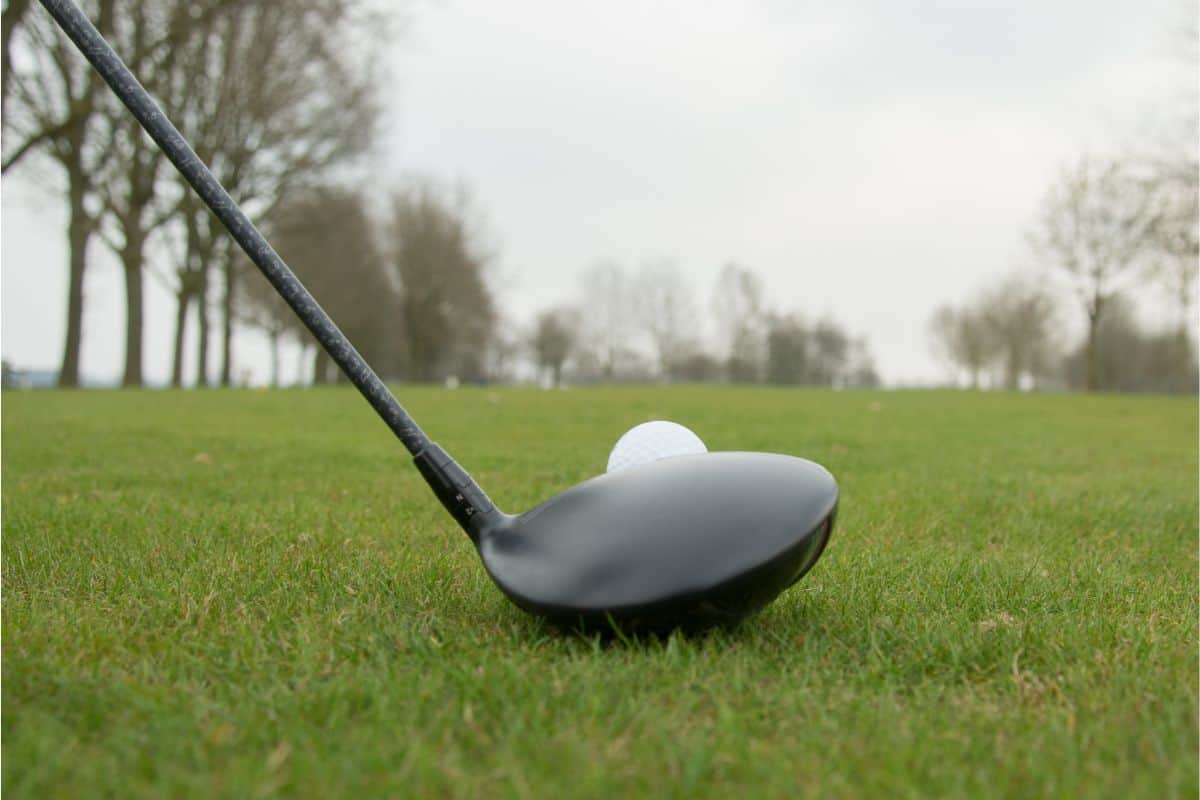If you’re searching for a gap wedge, you are most likely looking for something with a loft of 50 or 52 degrees, depending on your preference.
The majority of casual golfers use two wedges, so selecting the appropriate ones is critical to having a successful game. So, should you pack a 50 wedge or a 52 wedge in your golf bag?
The majority of typical golfers will discover that a 50 wedge is the most appropriate club for their game.
The fact that the great majority of players own both pitching wedges and a 56 sand wedge allows a 50 club to be used effectively in the center.
Naturally, this will vary depending on the number of wedges you intend to carry as well as the loft of the wedges you currently have in your possession.
We’ve written this comprehensive guide on both wedges to assist you in deciding whether or not it’s worth it to add them to your shoe collection.
We will go over all there is to know about these wedges, including their lofts, when they should be used, and much more.
Continue reading to find out more about 50 and 52 wedges, as well as which one is superior.
50 Or 52 – Which Is Better?
The vast majority of golfers utilize a 44-46 pitching wedge; therefore, having a good 50 wedge in your bag will be the perfect option for you.
With the addition of a 56 wedge to your bag, you’ll be able to evenly distribute your wedges over the course and cover the bulk of the distances comfortably.
However, what works for one person may not work for another. It depends on things like what wedges you want to have in your golf bag as well as the lofts you currently have in your bag.
Your skill level and play style will also influence what wedges you have in your golf bag. Most people have an average of three wedges, but some may have as many as five, which is pretty impressive.
A three-wedge combination is a decent choice for the vast majority of “average” players since it is a very versatile set. Here is an excellent combo of wedges to use:
- Gap wedge
- Sand wedge
- Pitching wedge
If you want to go up a level then here is an example of a four-wedge combination:
- Lob wedge
- Gap wedge
- Pitching wedge
- Sand wedge
The lob wedge is considered the optional added extra here, as it has a much higher wedge than the others. A lob wedge typically is 58 degrees or over.
This wedge is quite difficult for beginners or average players to use and is typically only seen used by professional players.
When estimating how much loft you’ll have, the loft of your pitching wedge should be taken into account as you may expect. Once you have done this, you’ll want to make sure that your wedges are evenly distributed.
The bulk of pitching wedges on the market now are between 44 and 46 degrees. Say you want to carry three wedges in a golf bag. The best combo of wedges to have are:
- Sand wedge – 56 degrees
- Gap wedge – 50 degrees
- Pitching wedge – 44 degrees
For those who find themselves in this situation, it may be a good idea to pack three wedges in your bag to prevent them from slipping away.
Ensure that you have the following wedges on hand at all times:
Take notice that the loft between the wedges is 6 degrees.
Though there will be a noticeable variation in distances, you will still be able to utilize the right club for all of your strokes due to the large shift in club length.
If you want to carry four wedges, here is the best combo to use:
- Loft wedge – 58 degrees
- Sand wedge – 56 degrees
- Gap wedge – 50 degrees
- Pitching wedge – 44 degrees
However, if your pitching wedge is 47-48 degrees, you may need to change your method a bit.
Before starting, you need to check that your wedges are properly spaced out and that you have at least 4 degrees of separation between clubs as a baseline.
50 Degrees – What Can It Be Used For?
Known as a gap wedge on the golf course, a 50 wedge fills the area between your sand wedge and your pitching wedge when you are on the green.
Most golfers who carry a 50 wedge also carry pitching wedges with an angle between 44 and 46 degrees.
Pitch wedges and sand wedges are the two types of wedges that are most typically encountered. Due to the large spacing between your clubs, you’ll want to add a gap wedge into your game as soon as possible.

This wedge may be used to hit entire strokes from the fairway, as well as bump and run around the green (when you need height and roll).
If your pitching wedge is between 44 and 46 degrees, you’ll want to have a 50 wedge in your bag, regardless of whether you want three or four wedges in your bag.
You should consider whether it makes sense to carry a 50 wedge in your bag if your pitching wedge has a loft between 47 and 48 degrees.
The number of wedges you choose to carry is totally up to you and depends on your skill level and play style.
For players with mid-to-high handicaps, three shots are plenty.
A 50 wedge can be used to replace a sand wedge when playing golf, according to the rules.
When faced with a greenside bunker on a par four or above, a 50 wedge out of the sand is not the best option in most cases.
The use of a 50 wedge out of sand is limited to one condition. This is when your ball is in a fairway bunker, which is the only situation in which you should use it.
50 Degrees – How Far Can You Hit It?
When hitting a 50 wedge, the highest distance you could get is just a little over 100 yards. However, depending on the swing and power used, you could hit the ball from anywhere from 80-130 yards.
In golf, a full swing is often utilized by longer hitters or golfers, but a 1/2 or 3/4 swing is typically employed by players who wish to hit the ball a shorter distance while keeping control of the ball.
The fact that wedges are scoring clubs means that distance isn’t a big factor in their performance.
It is vital to get the ball as close to the hole as possible, which is why many better players just do a half-swing with their wedges when they are on the course.
100 yards in length is the average distance of a ball that is hit.
The only reason your drives may be a little longer is that you might tilt the shaft forward, which lessens the amount of loft on the ball.
52 Degrees – What Can It Be Used For?
Known as a gap wedge on the golf course, a 52 wedge fills the area between your pitching wedge and your sand wedge when you are on the green.
Golfers who carry a 52 wedge in their bag are more likely to also carry pitching wedges with an angle of between 47 and 48 degrees in their bag, according to Golf Digest.
It is pretty rare to find a 52 wedge because of the popularity of pitching wedges. Pitching wedges typically are 44-46 degrees, making 52 wedges unnecessary in a typical game.
Six to eight degrees of separation between clubs is considered excessive, which is why a 50 gap between clubs is more commonly used in professional golf tournaments.
In the same manner that 50 wedges are used for full strokes from the fairway, 52 wedges can be used for chip shots when both height and roll are necessary.
If you have a 56-degree angle, it may not roll out as well as you would want, which is why a gap wedge is necessary.
What is the most effective technique to use a 52 wedge as a sand wedge on the golf course?
According to the rules of golf, a 52 wedge should only be used in a fairway bunker or sand trap. To consistently get the ball out of a greenside bunker, it is doubtful that it will have enough loft.
52 Degrees – How Far Can You Hit It?
Golfers hit their 52 wedges an average of 100 yards, while the distance can range between 85 and 110 yards depending on the course and wind conditions.
Golfers who use their wedge to make a regular swing commonly end up with a distance average of 110, whereas golfers who use their wedge to make half strokes often end up with a distance of around 85.
When two degrees of the loft are added to a 52 wedge, the average distance traveled by the wedge can be lower significantly.
A change of only an inch in grip will result in a 5-yard loss in the distance while you are using your 50-degree wedge.
The most important thing to remember while using wedges is to concentrate on control rather than distance.
Take a 3/4 swing and you’ll often lose up to 10 yards in distance, but you will be able to drastically improve your distance control skills as a consequence of the shorter swing.
Summary
While both the 50 and 52 wedges have their pros and cons, the 50 is probably best for the majority of people.
The 50 wedge is ideal for beginners or average golf players, as the 52 is typically reserved for pros who can have more control over their swings and the direction of the ball.
The 52 is also very similar to other wedges you can get, with just a minimal distance between this and pitching wedges.
This difference can only really be noticed by pros. So the 52 is a bit obsolete for the average player.
- Should Tee Boxes Be Level? - January 23, 2024
- 3 Hybrid Distance - November 15, 2023
- Innovations in Golf Mobility: An In-depth Review of Top Golf Scooters - October 12, 2023
